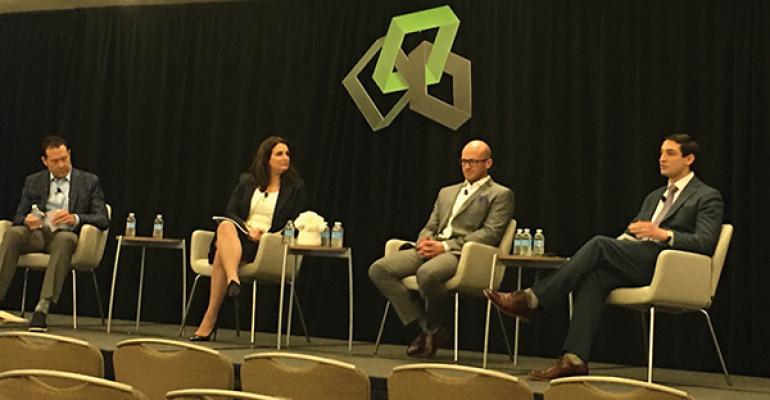Discussions at the National Investment Center's (NIC) spring conference touched on the growing convergence of healthcare and seniors housing.
More than 1,500 attendees were at the Marriot Marquis San Diego Marina attending the 2020 NIC Spring Conference on day one, a 4.4 percent increase from the first day of last year, according to NIC. It is NIC’s second largest event. The fall conference in Chicago boasted 3,300 attendees, an NIC record.
The overall sentiment at the conference was optimistic, though there are growing concerns around the coronavirus outbreak and rising healthcare costs.
Here are the main takeaways from sessions held on Thursday, March 5.
- There is a massive shift underway in how healthcare will be delivered to seniors and ultimately paid for, said Robert Kramer, NIC founder and strategic advisor. Kramer said “these are trends you need to pay attention to,” in order to not be replaced by other industry disruptors in the future. Josh Wallace, assistant executive director at Churchill Estates Retirement Community, a senior care facility, said the industry is evolving, as seniors housing used to be viewed separate from healthcare, but that that is slowly changing.
- The healthcare industry is moving from siloed, fee-based model to an integrated outcomes-driven based system. In other words, the industry is shifting from a volume model more towards a value-based model.
- Expense pressures, namely employee costs and healthcare benefits, are increasing, putting further emphasis on senior care facilities to provide more value for less money, said Wallace. Labor and direct care continue to be the primary expenses in seniors living, said Jerry Taylor, executive vice president at Solera Senior Living, a Denver-based senior living operator. Taylor suggested conducting a wage analysis to better understand labor costs.
- The role of partnerships with care providers is expected to increase, said Kramer. Right now, there is not good collaboration, and “someone needs to step up to fix it,” said Wallace.
- In the future, healthcare will go to where seniors live rather than forcing these seniors to go to the hospital or doctor’s office to receive their healthcare, especially for frail seniors, said Kramer.
- This demand will be driven by baby boomer consumers, technology will enable it, and payers (managed care) will pay for it because they believe it will produce meaningful healthcare dollar savings, according to Kramer.
- Coronavirus is also a growing concern among investors and is affecting purchasing, said Wallace. He pointed out the costs of masks, hand sanitizer and gloves, usual purchases in the healthcare industry, are increasing due to widespread reaction. Trip Holmes, president at Sabre Capital, a consulting agency, said the industry is prepared to offset coronavirus concerns.
- Seniors housing providers will see a significant increase in health and supportive services for their residents being paid for through Medicare Advantage over the next three to five years, according to both Daniel Lindh, president and CEO of Presbyterian Homes & Services, and David Nash, founding dean emeritus at the Jefferson College of Population Health.
- Roughly 34 percent of seniors living in private housing are enrolled in Medicare Advantage. Nash said to expect that to jump to 80 percent by 2030, while Lindh said expect the rate to increase to 60 percent by 2030.

0 comments
Hide comments





